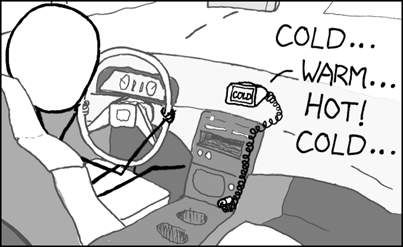
Two things happened recently that made me come to the conclusion that Powerpoint pretty much forces you to give one type of presentation. First, I was helping my wife prepare a talk for her job. Powerpoint in the way it is set up was forcing her to create the talk in a specific fashion. Multiple bullet points and a print out of the slides to give to the audience. She was used to seeing presentations like this, didn't like them, but was having a hard time breaking away from that format.
Pretty much every Powerpoint I see is built with numerous slides with lots of bullet points. The presenter reads what is on the slides. The slides are printed out and given to the audience. Every time, I walk away thinking, "why didn't they just send us the presentation and save us the time."
The second thing that influenced my viewpoint was watching this slideshow by Rowan Manahan,
Dodging bullets in Presentations, where he pretty much put my thoughts into words. He takes wordy slides and shows how they can be re-created to support your presentation. The focus should almost always be you and your content. Your slides should emphasize your points. I admit there are times when data heavy presentations need to be made but there has got to be a better way than watching graph, after table, after chart projected up on a screen.
What I would like to see is a program that asks you to identify your audience, determine what type of presentation it is and then ask you to write out your script before you ever see a slide template. I'm sure I am paraphrasing one of the more knowledgeable presenters I have blogged about but my thinking is that your presentation should first be able to stand without any slides. Get to the point where you can give the talk with only a few notes. Then look at what kinds of graphics would best support or emphasize your points. If you are going to give your audience a handout, make it from scratch and don't rely on the nifty "print handouts" feature in Powerpoint.
I'll be teaching Powerpoint next year to high school freshmen and am thinking that before my students even open Powerpoint they will need to prepare a speech and give it to the class. Then, and only then, will we open the program and look at ways to enhance their speeches.
Any thoughts?
[Image taken from the slideshow "Dodging bullets in presentations" by Rowan Manahan]



















